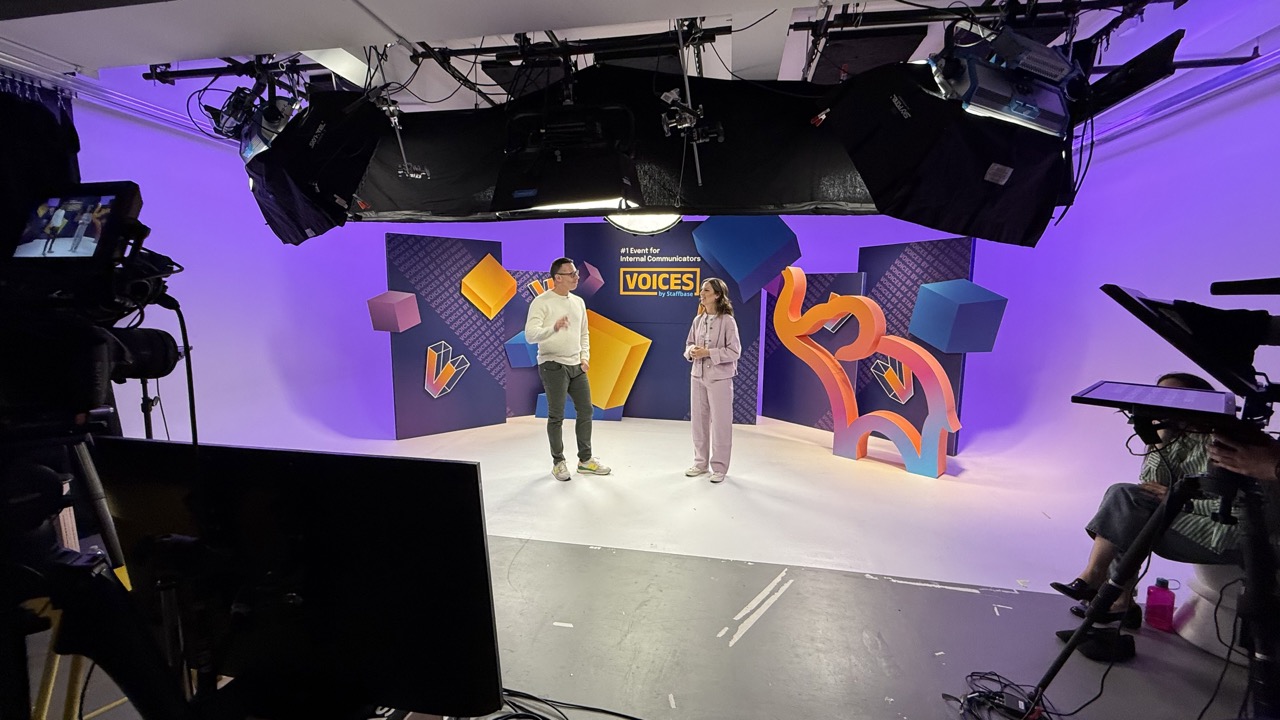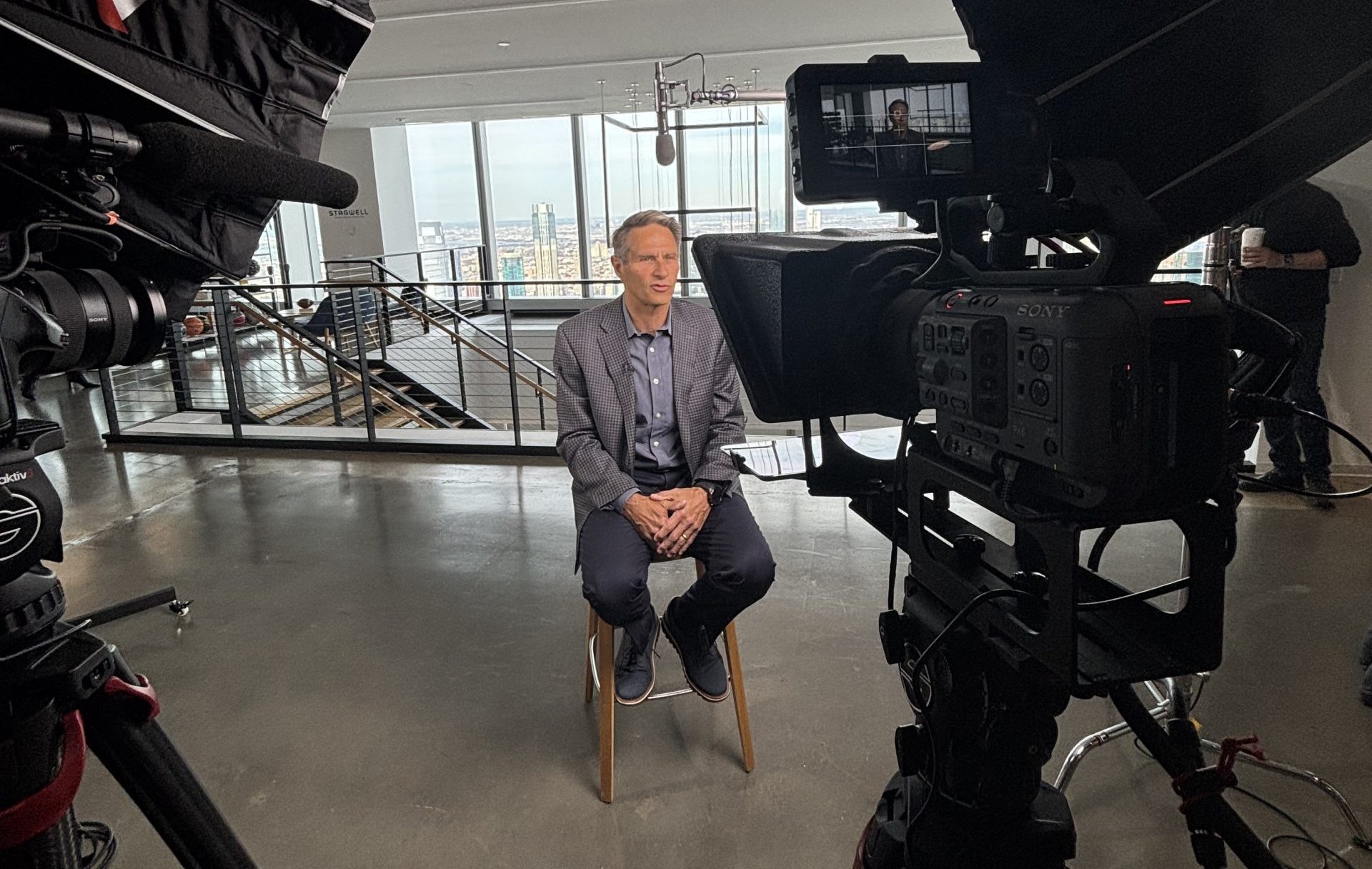In healthcare, video is a powerful tool that enhances patient engagement, simplifies medical information, and builds trust. It helps patients understand their options and make informed decisions. This article will explore the benefits of using video in healthcare, emphasizing the importance of video in healthcare, from patient education to marketing strategies, and how it contributes to better healthcare outcomes.
Key Takeaways
- Video marketing enhances patient engagement, trust, and education, making healthcare interactions more personal.
- Different types of videos, including educational, testimonials, and live streaming, serve unique purposes in a comprehensive healthcare marketing strategy.
- High-quality video production is essential for effective communication, and strategic distribution on social media can maximize reach and impact.
The Impact of Video Marketing on Healthcare Practices
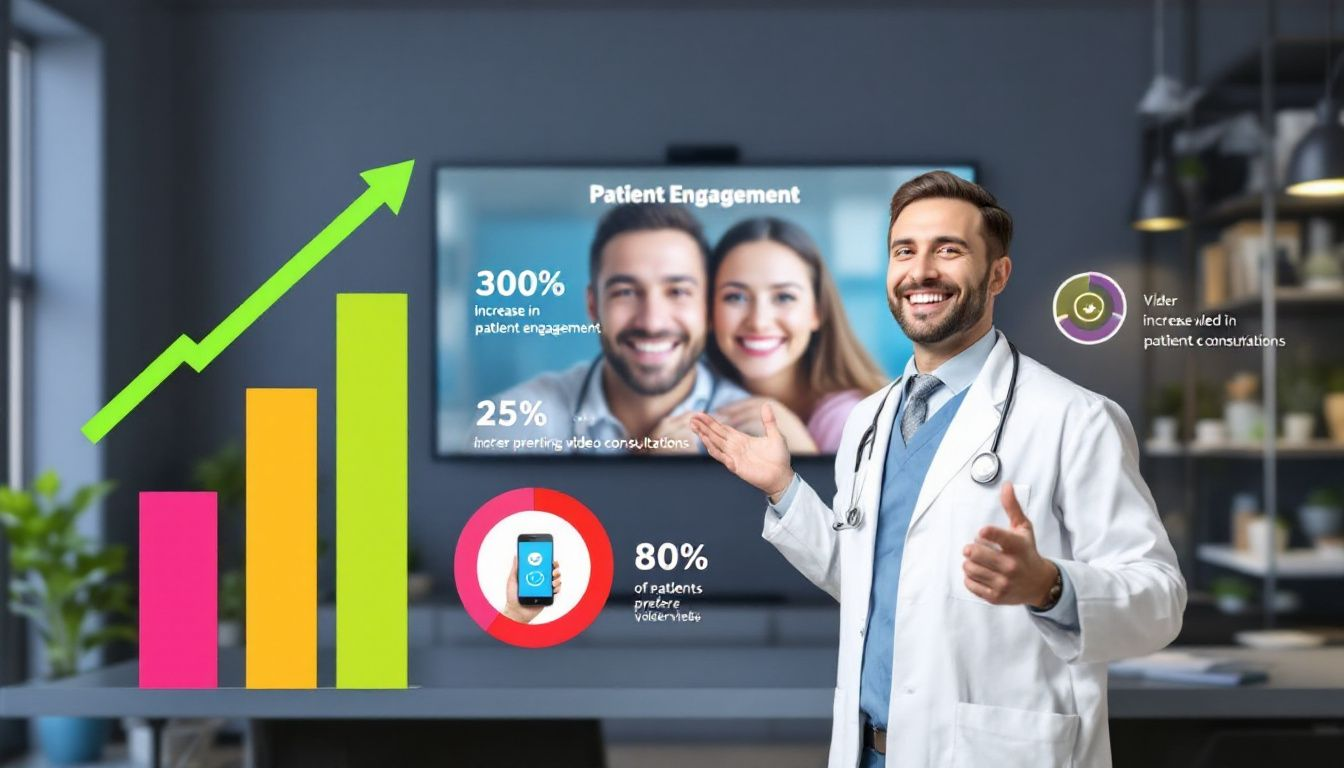
Video marketing provides a dynamic way to engage patients, going beyond traditional text-based content. Prioritizing video content allows healthcare practices to create personal connections with patients, making interactions feel more genuine and less transactional. This method is particularly effective in healthcare, where trust and understanding are paramount.
One of the most significant impacts of video marketing is enhanced patient engagement. Studies have shown that 30% of patients who watched an online health video booked an appointment. This statistic underscores the tangible returns on investment that healthcare providers can achieve through video marketing. Using videos to highlight unique features and services helps healthcare practices familiarize patients with their environment, further boosting engagement and trust.
Videos also play a crucial role in simplifying complex health conditions. Educational videos covering general health topics and specific areas of focus can help patients understand their healthcare options and processes. This not only improves patient education but also enhances the overall patient experience, building trust and credibility in the healthcare practice provider.
Moreover, video marketing enhances brand effectiveness and the patient experience. Creating a platform for easy-to-understand explanations of medical procedures ensures that patients are well-informed and comfortable with their treatment plans. This approach not only educates but also empowers patients, fostering a sense of confidence and security in their healthcare journey.
Types of Videos Essential for Healthcare Marketing
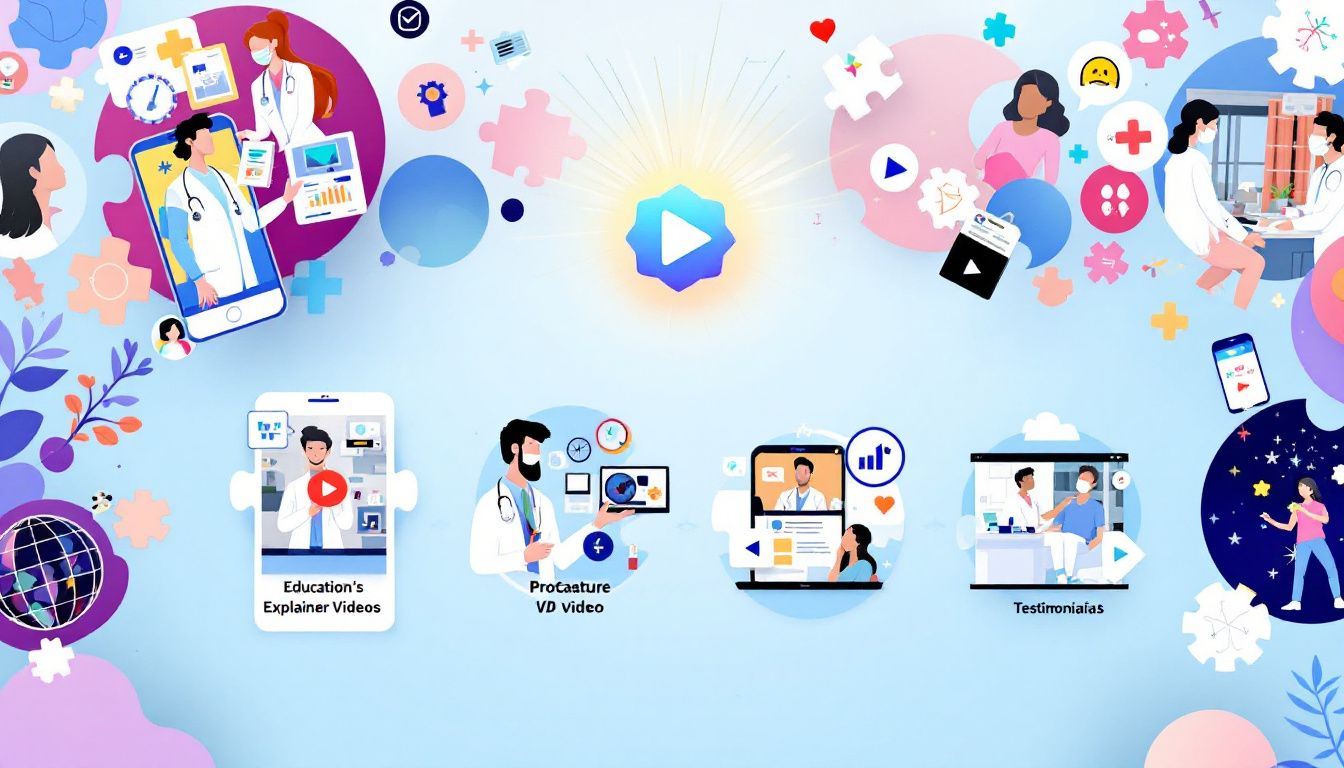
Video marketing in healthcare is multifaceted, involving various types of videos to cater to different needs and audiences. Each type of video serves a unique purpose, contributing to a comprehensive healthcare marketing strategy.
Educational videos are fundamental, empowering and educating patients about their healthcare options and processes. These videos help patients understand medical information and learn about treatment options, making complex concepts more accessible. They address the needs of patients with low health literacy by providing visual explanations, which can significantly enhance understanding.
Patient testimonials bring a personal touch, increasing trust and emotional connection with healthcare providers. These videos feature real patient experiences, conveying authenticity and sincerity that scripted testimonials often lack. Showcasing positive patient experiences helps healthcare practices build a deeper connection and trust among potential patients.
Live video streaming is another powerful tool, enabling real-time interaction with patients. Live Q&A sessions, virtual tours, and updates can foster immediate engagement and build community trust. This format is particularly effective in addressing patient concerns and providing timely information.
360-degree videos offer potential patients virtual tours of healthcare facilities in the healthcare industry, helping to alleviate fears about the medical environment. These immersive videos provide a comprehensive view of the facilities, making the healthcare experience more transparent and less intimidating.
Long-form videos allow for in-depth exploration of complex topics, building an informative and trustful relationship with the audience. These online videos can cover detailed aspects of healthcare, from medical procedures to in-depth discussions on treatment options, providing valuable information that can aid in decision-making.
Enhancing Patient Education with High-Quality Video Content
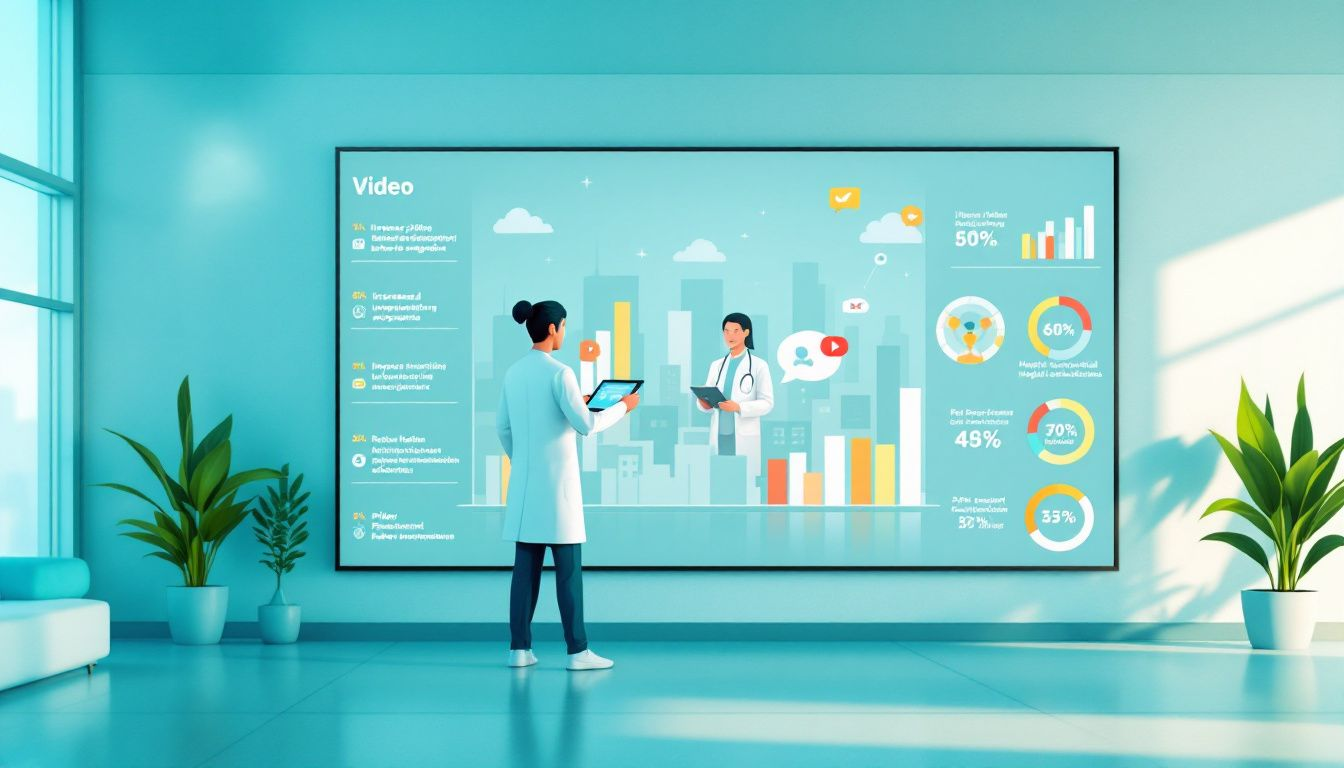
High-quality video content is a cornerstone of effective patient education. By creating videos that are both visually appealing and informative, healthcare providers can significantly enhance patients’ understanding of complex medical concepts. Quality audio and good lighting are crucial, as inadequate production can lead to viewer disengagement.
Educational videos serve as a controlled environment for learning, helping to standardize skill demonstrations and providing essential information in a clear and concise manner. These videos can explain medical procedures through step-by-step visuals or in-depth explanations from doctors, making complex topics more accessible. Educational videos address the needs of patients with low health literacy, ensuring that everyone receives the information needed to make informed decisions.
Interactive elements in videos can boost engagement and improve learning outcomes. Incorporating quizzes, clickable links, and other interactive features can make the learning experience more engaging and effective. Additionally, short educational videos can significantly enhance learners’ experiences and improve retention of information.
Planning and storyboarding are essential for creating clear and focused educational videos. Ensuring each video has a clear objective and delivers concise messages helps healthcare providers maintain viewer attention and enhance comprehension. High-quality videos also facilitate self-paced learning, allowing viewers to revisit material as needed, further reinforcing their understanding.
Building Trust Through Patient Testimonials
Patient testimonials are a powerful tool in building trust and credibility in healthcare marketing. Video testimonials from real patients can effectively showcase the positive experiences others can expect at a healthcare facility. These testimonials serve as endorsements, enhancing the credibility of healthcare practices and reassuring prospective patients.
Incorporating patient success stories into marketing strategies fosters a deeper sense of connection and trust among potential patients. Real patient narratives, even if less polished, often have a greater impact than scripted testimonials due to their authenticity. This relatability and emotional connection can significantly sway potential patients’ choices, making them more likely to choose a particular healthcare provider.
Displaying patient testimonials can also boost conversion rates significantly, with studies indicating an increase of up to 270%. Sharing these stories helps healthcare providers build a sense of community and trust, making initial interactions with new patients feel more personal and reassuring.
Leveraging Social Media Channels for Video Distribution
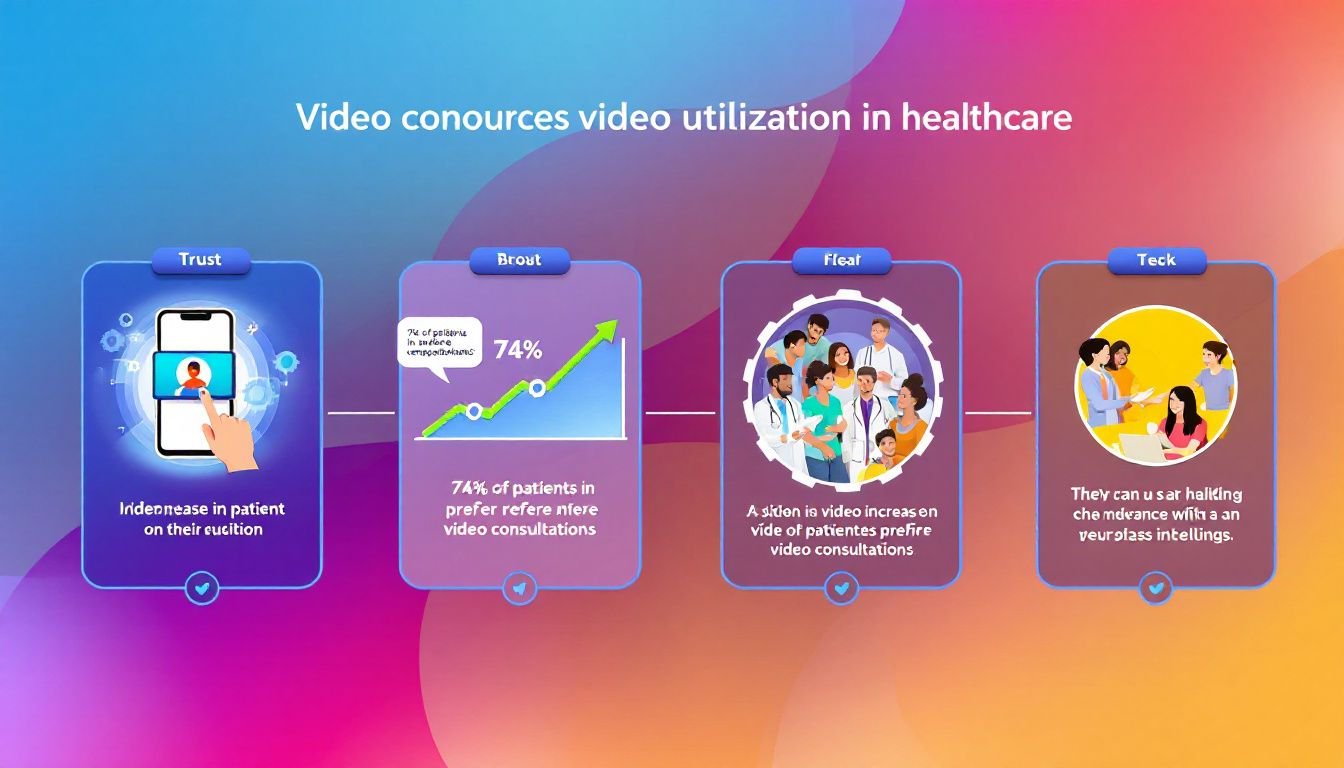
Leveraging social media channels for video distribution is crucial in maximizing the reach and impact of healthcare video marketing. Video content significantly enhances patient engagement by personalizing content to address specific health concerns. Repurposing healthcare video content allows providers to broaden its reach across various social media platforms, enhancing overall marketing efforts.
Platforms like YouTube play a significant role in healthcare video distribution, allowing providers to connect with patients searching for health-related videos. YouTube’s vast user base and search engine integration make it an ideal platform for reaching a wide audience. Additionally, breaking down longer videos into shorter clips tailored for different social media platforms can maximize audience reach for a healthcare organization.
TikTok has become an increasingly popular platform for healthcare professionals to engage younger audiences with brief health tips and relatable content. This platform is particularly effective in specialties like mental health, pediatrics, and dermatology due to its engaging nature. Live video formats, including Q&A sessions, foster real-time interaction and build community trust in healthcare contexts.
Utilizing AI-powered tools can enhance video personalization, significantly boosting patient engagement with healthcare video content. Tailoring videos to specific demographics and health concerns helps healthcare providers create more relevant and impactful content. With these strategies, healthcare organizations can effectively leverage social media to distribute their video content and engage with their target audiences.
Incorporating Video into Your Overall Healthcare Marketing Strategy

Incorporating video into your overall healthcare marketing strategy can significantly enhance patient engagement and improve marketing outcomes. Webinars, for instance, allow healthcare organizations to share specialized knowledge and engage with audiences in a meaningful way. These virtual events can be recorded and repurposed as video content, extending their reach and impact.
A clear distribution strategy is essential for the effectiveness of video content. Failing to plan for distribution can undermine the potential benefits of video marketing. Integrating video content into blog posts and other written materials improves engagement and credibility, showcasing medical expertise alongside valuable information.
Video content also contributes to better search engine optimization, as pages with video are generally favored over those with only text. Engaging video content should start with an attention-grabbing hook, similar to effective blog or social media posts. Subtitles in videos increase accessibility, allowing a wider audience to engage with the content.
Creating diverse video content types helps healthcare marketers maintain viewer interest and engagement, ensuring a robust and effective marketing strategy for their target audience.
Common Mistakes to Avoid in Healthcare Video Marketing
Avoiding common mistakes in healthcare video marketing is crucial for achieving success. One of the most significant mistakes is poor production quality, which can lead to viewer disengagement. Ensuring high-quality audio, lighting, and visuals is essential for creating professional and engaging videos.
Unclear messaging is another common pitfall. Videos should deliver clear, concise messages that are easy to understand. Avoid using dull slideshows and simply reading scripts, as these approaches fail to captivate the audience. Instead, focus on creating dynamic and engaging videos that effectively communicate key healthcare information.
Lack of a proper distribution plan is a significant mistake that can undermine video marketing efforts. Healthcare providers should develop a clear strategy for distributing their videos across various platforms, ensuring that the content reaches the intended audience. Avoiding these common mistakes helps healthcare marketers enhance the effectiveness of their video marketing campaigns and achieve better results.
Measuring the Success of Your Video Marketing Efforts
Measuring the success of video marketing efforts is essential for understanding their impact and making informed decisions. Key metrics such as play rate, which indicates the percentage of page visitors who clicked ‘play’ on the video, help assess its visibility. Engagement percentage shows how much of the video viewers watched, revealing viewer retention and drop-off points.
Click-Through Rate (CTR) measures the effectiveness of calls to action within the video, indicating audience responsiveness. Social sharing metrics assess how often viewers share your video, serving as an indicator of its appeal and brand awareness. Conversion rate tracks the number of leads or customers generated through the video, providing insights into its impact on sales.
Feedback from viewers, gathered through comments and reactions, offers qualitative insights into audience reception of the video. Tools like Wistia provide advanced analytics and optimize video performance by tracking key viewing metrics.
Establishing clear objectives at the start of your video project aids in determining relevant metrics for assessment. Tracking multiple performance metrics helps healthcare providers gain comprehensive insights into the effectiveness of their video content.
Contact ASL Productions Today!
For the best in video production, contact ASL Productions today. Our expertise in creating high-quality healthcare videos can help your medical practice achieve its marketing goals and connect with patients in meaningful ways.
Let us help you create videos that bring your vision to life with professional video production services. Contact us now!
Summary
Video marketing is an invaluable tool in the healthcare industry, enhancing patient engagement, education, and trust. By utilizing various types of videos, healthcare providers can create dynamic and informative content that resonates with patients and simplifies complex concepts. Patient testimonials, live streaming, and 360-degree tours are just a few examples of how video can be leveraged to build a comprehensive healthcare marketing strategy.
Avoiding common mistakes and measuring the success of video marketing efforts are crucial steps in optimizing your approach. With the right strategies and tools, healthcare providers can harness the power of video to improve patient education, build trust, and achieve measurable results in their marketing efforts.
Frequently Asked Questions
Why is video marketing important in healthcare?
Video marketing is crucial in healthcare as it fosters patient engagement, clarifies complex medical information, and establishes trust and credibility with patients. Utilizing video effectively can significantly enhance communication and relationships in the healthcare sector.
What types of videos are essential for healthcare marketing?
To effectively engage your audience in healthcare marketing, focus on educational videos, patient testimonials, live streaming, 360-degree tours, and long-form videos. These formats help build trust and provide valuable information to potential patients.
How can high-quality video content enhance patient education?
High-quality video content enhances patient education by delivering clear explanations of medical procedures and improving engagement through interactive elements, making it particularly beneficial for those with low health literacy. This approach not only informs but also empowers patients in their healthcare journey.
What are common mistakes to avoid in healthcare video marketing?
To ensure effective healthcare video marketing, avoid poor production quality, unclear messaging, and the absence of a proper distribution plan. These mistakes can hinder your outreach and impact.
How can I measure the success of my video marketing efforts?
To effectively measure the success of your video marketing efforts, track key metrics such as play rate, engagement percentage, Click-Through Rate (CTR), social sharing, and conversion rate. Analyzing these indicators will provide valuable insights into your video’s performance and audience engagement.






